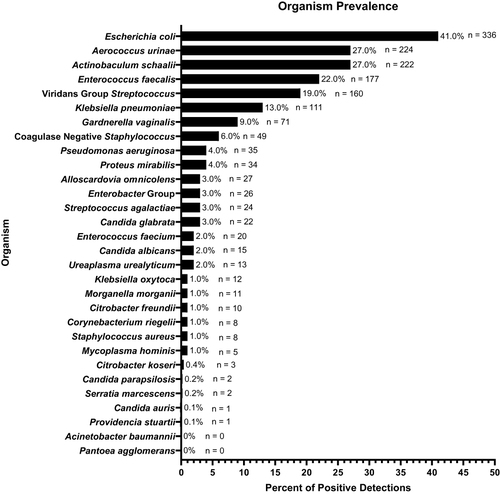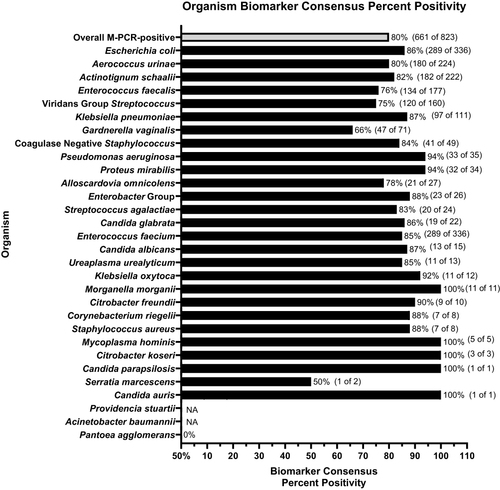Figures & data
Table 1 Biomarker Positivity Cutoffs
Table 2 Demographics of the Study Cohort
Figure 1 Organism detection prevalence.

Table 3 Biomarker Positivity in Groups of Five Organisms by Prevalence
Table 4 Biomarker Positivity in M-PCR Positive versus Negative Cases
Table 5 Biomarker Positivity in M-PCR Positive Cases Grouped by Organism and Infection Characteristics
Figure 2 Biomarker consensus percent positivity by microbial identification.

